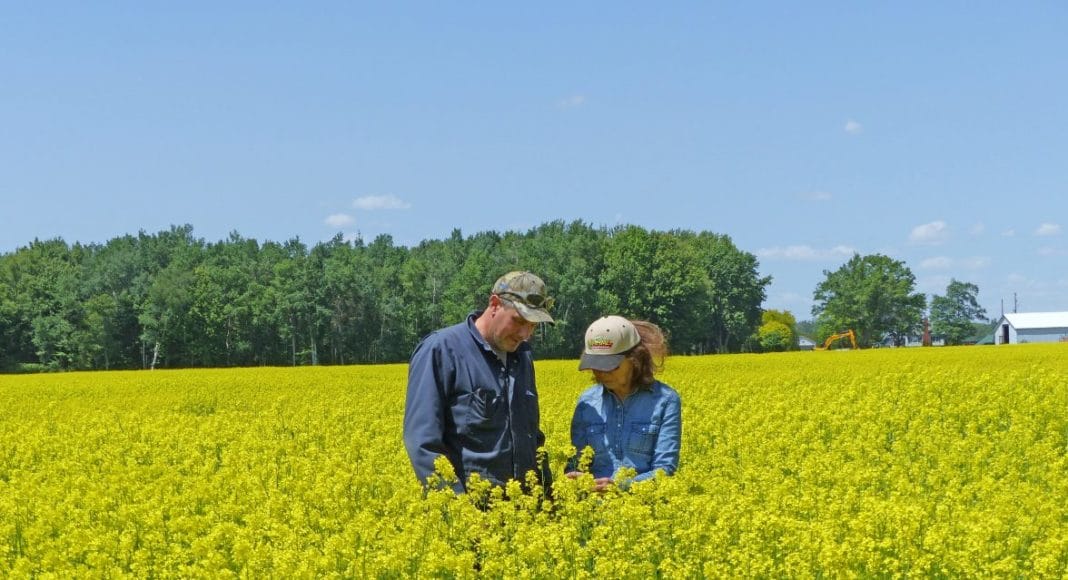In this column I’m looking at three aspects of potato production — the risk of insecticide resistance in Colorado potato beetles (CPBs), “lazy” potato varieties which sprout unevenly and bio-fumigation for soil health improvement.
Tackling Colorado Potato Beetle Insecticide Resistance
CPBs have a long history of developing resistance to insecticides. Many growers will remember the early 1990s when there were no effective products available. This changed in 1995 when Admire (imidacloprid), the first neonicotinoid, was registered in Canada. New generations of neonicotinoids continue to provide good control, but resistance may be just around the corner.
Recent research has shown female beetles produce a sex pheromone to attract males. Male beetles move upwind turning left and right following a scent trail as they search for females. If the pheromone can be produced synthetically, then it could be used to cause ‘mating confusion’.
If the pheromone is sprayed everywhere, then the males would spend their time turning left and right but not find a female. Males “follow their nose” even when they are very close to females. This should significantly reduce mating. CPB females are very prolific, laying about 400 eggs during their lifetime. Any management practice which disrupts mating should reduce CPB populations. We need to stay tuned for the development of this CPB management practice.
Using Gibberellic Acid Seed Treatment to Break Dormancy for the Chipping Variety Waneta
Waneta is an important chipping variety in Ontario for processing growers and for WD Potato Ltd. in Beeton, ON. Waneta chips well but is a “lazy” variety — it takes time to break dormancy and emergence is uneven.

This season, Mark VanOostrum, the supply manager of WD Potato, is evaluating gibberellic acid (GA) to find out if this plant growth regulator can counteract apical dominance and break dormancy of Waneta — this should result in more even emergence and a better crop stand.
VanOostrum is conducting five trials in commercial fields. GA was applied as a seed treatment at the rate of one g ai per 1,334 cwt of seed. The seed was cut, treated, and planted the same day. The emergence of treated seed was a lot faster than the control and very even.
VanOostrum, who is a dedicated potato researcher, is always looking for solutions to production challenges and is very excited with the so far successful on-farm trials, and so are the growers who are participating in this research. He hopes for better stem counts and a bigger set. Stay tuned for the harvest results!

New Equipment for Incorporating Biofumigants
Mustards are being used by many growers as biofumigants because, like most brassicas, mustards release glucosinolates when chopped. Glucosinolates are converted in the soil into gaseous compounds called isothiocyanates that can suppress or kill Verticillium fungi and root-lesion nematodes.
Charles Emre, a potato producer from Norfolk County, has been growing mustards as a biofumigant for many years. He has noticed the soil health of his fields has improved over the years. This has translated into a higher quality potato crop.
Mustards grown as biofumigants are chopped at full bloom and must be incorporated immediately, usually with a rototiller. Then the soil surface is sealed with a heavy board or roller, a process which requires two tractors, two drivers and three pieces of equipment for chopping, incorporating and sealing. Emre has evaluated a new system — a front-mounted shredder and a rear-mounted FarmaX Spader and roller. It takes a large tractor but as Emre says, the benefits are that only one driver, one tractor and one pass over the field are needed, making for quick incorporation of mustard after chopping and then the sealing. This results in very little loss of isothiocyanates from the soil.
Also, Emre has been evaluating mustard seed mixes for many years on his farm because “not all mustards are equal. There are significant differences among mustard varieties”. After many years of evaluation, he has come up with a cocktail mix which seems to work extremely well for improving soil health.











